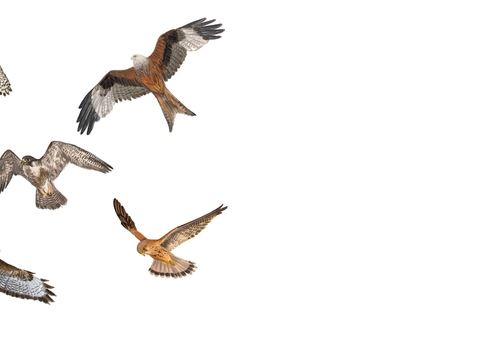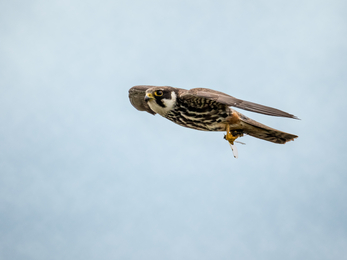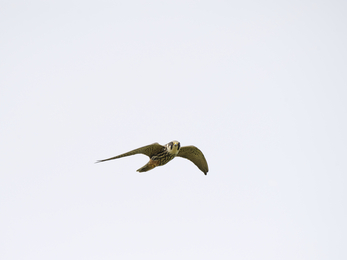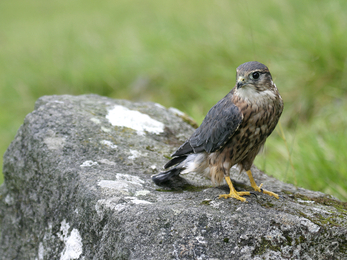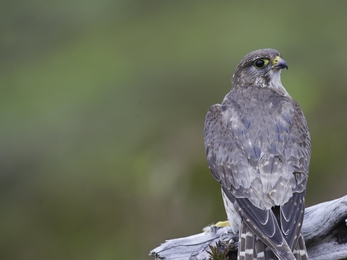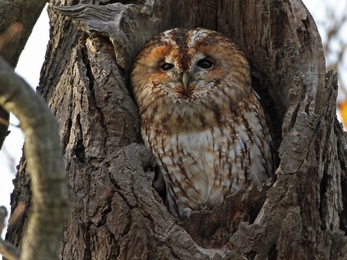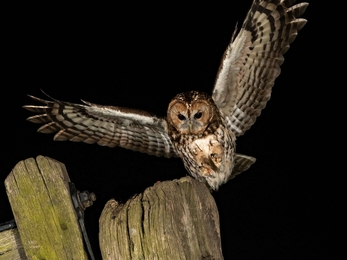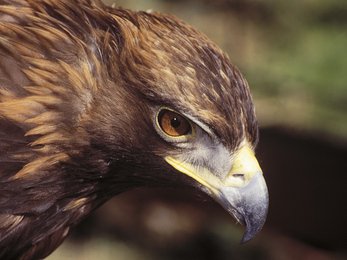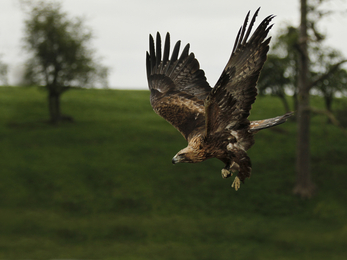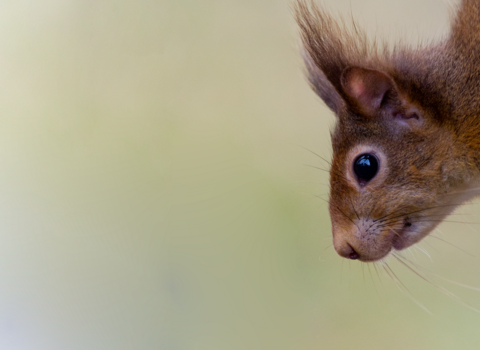What bird of prey have you spotted?
‘Birds of prey’ are large, predatory bird species that have hooked bills, sharp talons, strong feet, and keen eyesight and hearing. They tend to feed on small mammals, birds, insects and reptiles. The UK’s birds of prey come in a huge variety of shapes and sizes:
- Hawks and eagles: medium to very large; hooked bills; rounded or broad wings; sharp talons; tend to soar
- Falcons: small to medium-sized; tapered wings and tails; fast and agile; often hover
- Owls: small to large; rounded heads; small, hooked bills; forward-facing eyes; mainly nocturnal
Sparrowhawk
Where: Variety of habitats, including gardens, across the UK.
Description: Small. Males have blue-grey backs and white underparts with orange barring. Females are brown above, with grey barring underneath.
Peregrine falcon
Where: Coastal cliffs and some towns in North and South West England, Wales and Scotland.
Where to see peregrine falcons
Description: Medium. Slate-grey above and white below, with black bars underneath, a white throat and cheeks, and a black moustache and mask.
Read more
Hen harrier
Where: Breeds on upland moors (rare in England); winters on coasts, heathland and farmland across the UK.
Where to see hen harriers
Description: Medium. Females are brown above and streaked below, with a white rump and banded tail. Males are blue-grey with black wingtips.
Read more
Marsh harrier
Where: Reedbeds in East Anglia, Somerset and the South East
Description: Large. Males are brown above and ginger underneath, with grey, black-tipped wings. Females are chocolate-brown with a golden-yellow crown and throat.
Golden eagle
Where: Upland areas and glens in Scotland.
Description: Very large. Mainly dark brown, with a golden head and neck.
Read more
Barn owl
Where: Grassland and farmland across the UK.
Where to see barn owls
Description: Small. Mottled silver-grey and buff back, white underside, heart-shaped, white face, and black eyes.
Read more
Osprey
Where: Wetlands in Scotland, Northumberland, Cumbria, Wales and the East Midlands in summer
Where to see ospreys
Description: Large. Dark above and white below, with angled wings that show dark patches.
Read more
Short-eared owl
Where: Moorlands, saltmarshes and rough grassland.
Description: Medium. Mottled yellowy-brown above and pale below, with dark circles around its yellow eyes and short ‘ear tufts’.
Other rare species that breed in the UK include goshawk, white-tailed eagle and long-eared owl. Find out more about identifying all our birds of prey on our species explorer.
Are birds of prey under threat?
During the 20th century, many of our birds of prey were persecuted to near extinction such as the white-tailed eagle, or severely suffered from the effects of organochlorine pesticides like DDT - such as the merlin. Today, massive conservation efforts offer them a lifeline. Not only are The Wildlife Trusts involved in reintroduction and habitat restoration programmes we are also working towards a living landscape – a network of habitats that link urban green spaces and nature reserves with the wider countryside, enabling wildlife to thrive and move about freely.

